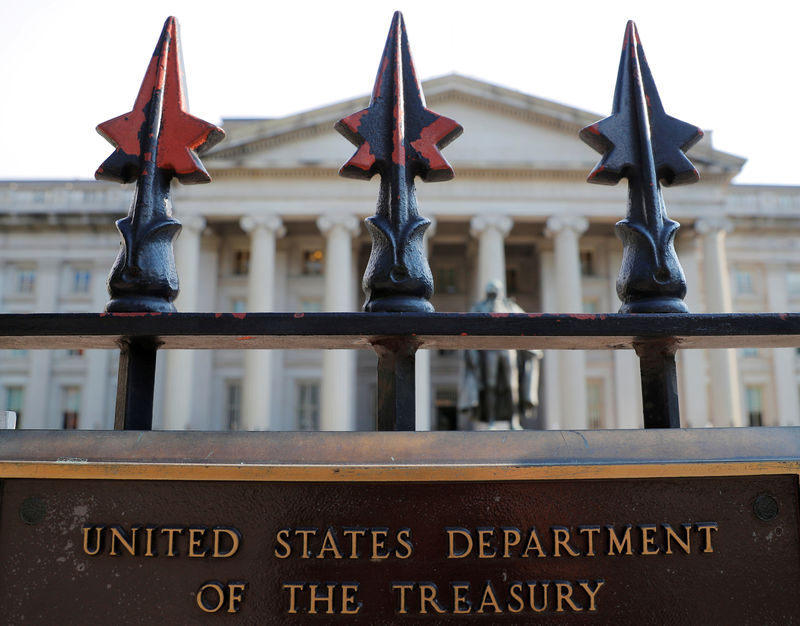By Gertrude Chavez-Dreyfuss
NEW YORK (Reuters) - Foreigners sold U.S. Treasury bonds and notes for a third straight month in May, but bought a record amount of stocks, as well as corporate bonds, data from the U.S. Treasury Department showed on Thursday, as investors drove a rally in risk assets.
Foreign outflows from the U.S. Treasury market totaled $27.7 billion in May, compared with outflows of $176.5 billion the previous month. In April, Treasuries saw a record outflow of $299 billion.
At the same time, however, foreign investors purchased $79.7 billion of U.S. equities in May, an all-time high. In April, foreigners sold $8.6 billion in stocks.
U.S. corporate bonds saw an inflow for a third consecutive month of $13.6 billion, from an inflow of $10.94 billion the previous month.
"If you look at the transactions data, there was a pro-risk pivot in May," said Jon Hill, interest rates strategist at BMO Capital in New York.
"There was net selling of Treasuries, and a decline in agency buying, but net buying of corporate bonds and equities. It seems like some of the foreign private investors helped push that rally in May as the Federal Reserve's liquidity programs were kicking in," he added.
Benchmark U.S. 10-year Treasury yields ended May at 0.64%, mostly, steady for most of the month, after hitting a record low of 0.318% (US10YT=RR) in March.
Data also showed that Japan remained the largest non-U.S. largest holder of Treasuries during the month, although its holdings declined to $1.26 trillion in May, from $1.266 trillion in April.
China's holdings of Treasuries, however, rose to $1.08 trillion in May, from $1.07 trillion in April. The country is the second largest non-U.S. holder of U.S. government debt.
Overall, foreign holdings of U.S. Treasuries rose by about $80 billion in May to $6.86 trillion, after hitting an all-time peak of $7.066 trillion in March.
"We're finally getting a month of rebound Treasury inflows, after two months of selling," said Gennadiy Goldberg, senior rates strategist, at TD Securities.
"This shows that there had been some flows back to Treasuries. I think this was less safe haven in nature, but more redeploying assets to Treasuries after we saw a lot of cash-building going on during the pandemic," he added.
